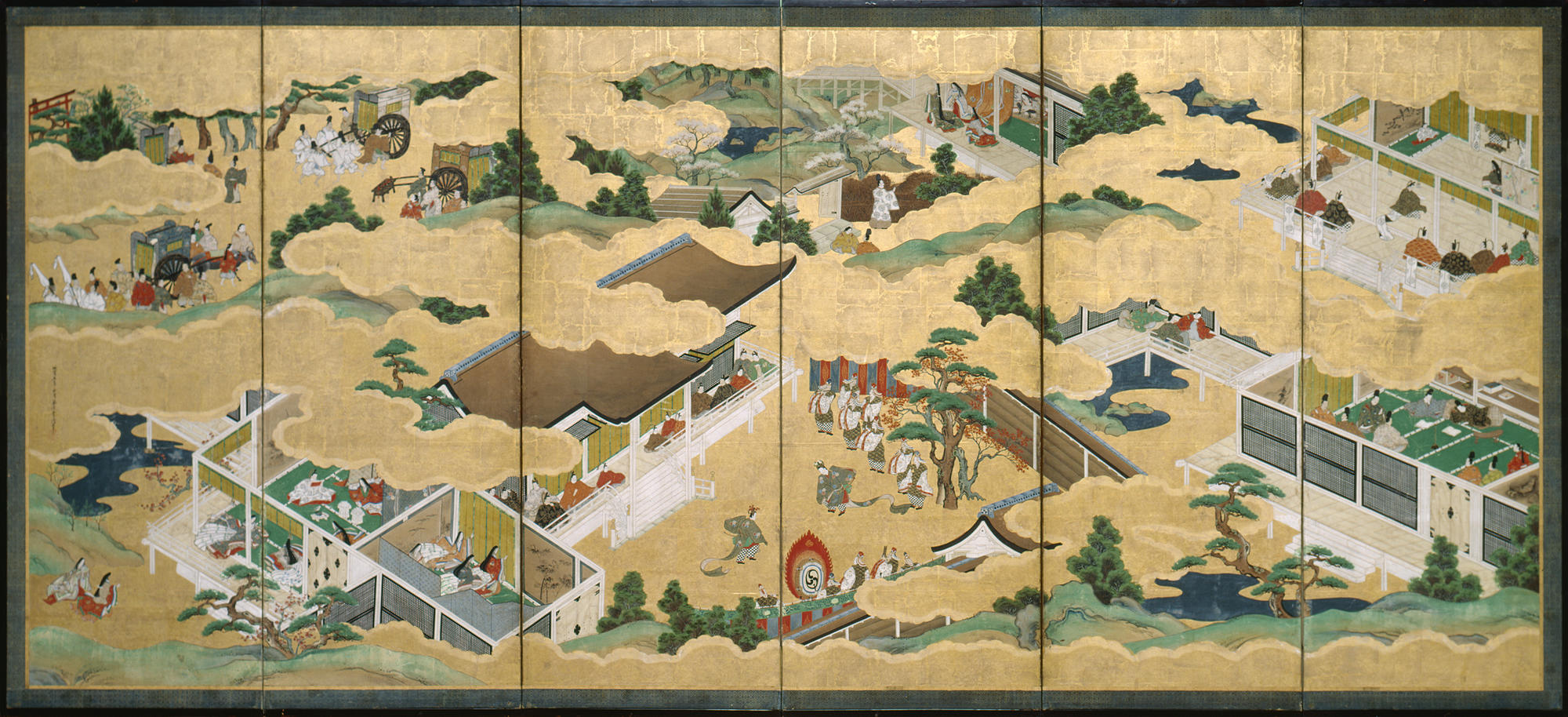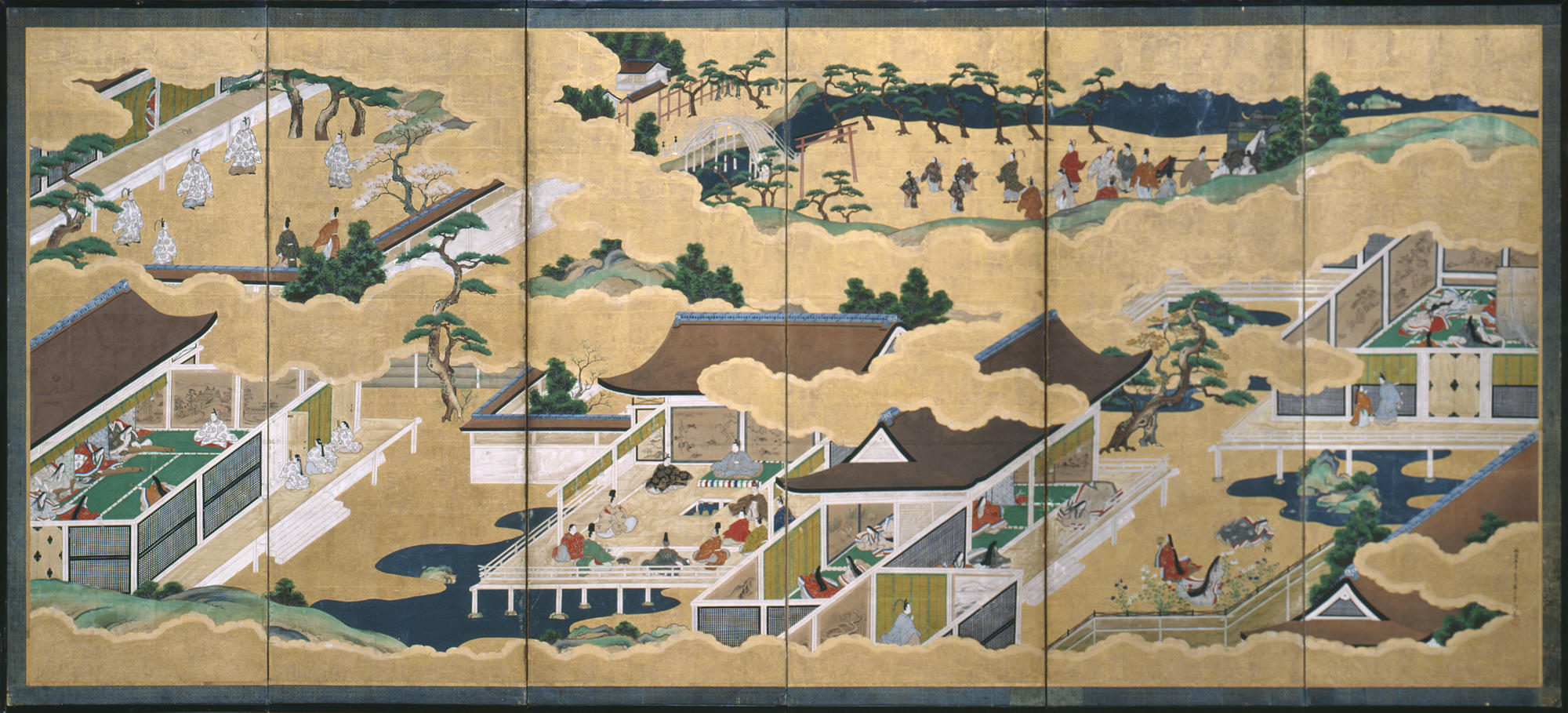The colors of the sky at that time of year, the tonal quality of the instruments, and the echoing music played in the spring mode worked to convince everyone that there was indeed a distinction between the seasons, and that spring was superior. The concert continued on through the night.
This sounds like an impression of Isabella Stewart Gardner’s Courtyard in April. Filled with luminescent hanging nasturtiums, it’s easy to imagine the space ringing with the sounds of her musical friends and protégés, perhaps as she hosted a party to celebrate her birthday and the advent of spring.
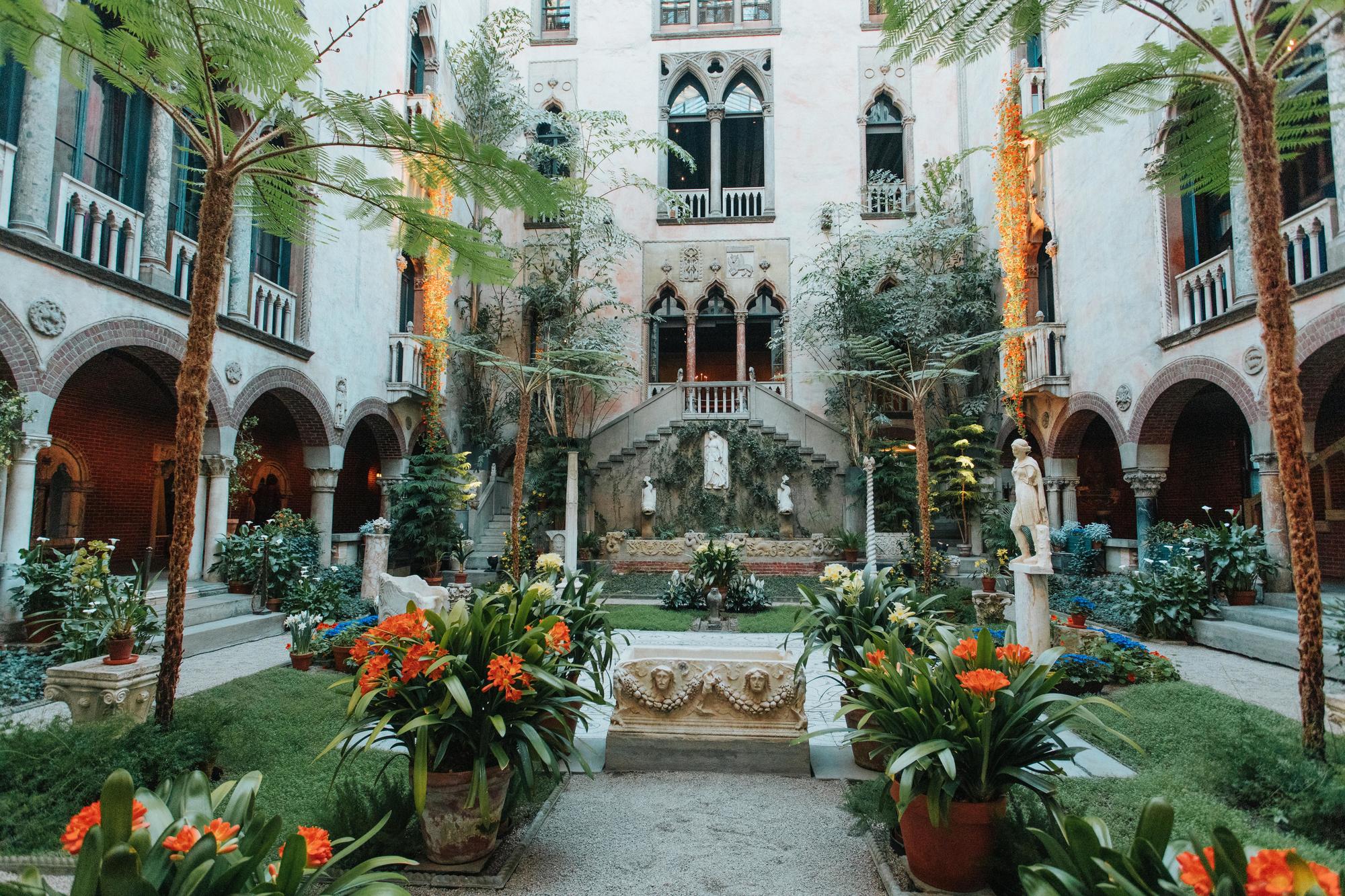
Photo by Ally Schmaling
Actually, it’s a passage from The Tale of Genji, a classic work of Japanese literature written by noblewoman Murasaki Shikibu in the 11th century. Genji, the shining aristocrat at the center of the story, is much like Isabella—a magnetic maven of the arts whose taste and social elegance drew the admiration of all his peers. Like Isabella, his stylish gatherings brought together all the most talented artists and thinkers of the day to revel in the beauty of plants, music, art, and poetry.
Perhaps unsurprisingly, Isabella was taken by The Tale of Genji, and included in her collection a pair of folding screens painted with scenes from the book.
One of these screens, found in the Museum’s Third Floor Passage, depicts a scene just like the passage above, with a group of courtiers playing wind and percussion instruments to accompany a dance in the courtyard of Genji’s villa. All that’s missing is its “echoing music.”
If we could listen to the music being played in the painting, we’d quite likely be hearing gagaku, the instrumental court music of 11th-century Japan, either played in concert or to accompany dance. As exemplars of refined taste, courtiers were expected to be masters of the arts and accomplished instrumentalists. Musical ability was a way to demonstrate their aesthetic, romantic, and spiritual sensitivity.
This Spotify playlist offers a selection of tracks to help transport us in spirit to Genji’s villa—or Isabella’s Courtyard—for a celebration of spring.
Track 1, "Karyobin," is an evocative example of traditional gagaku named after the karyōbinga, a Buddhist immortal creature with a human head, a bird’s body, and a flowing tail. This song would accompany a dance of a butterfly motif, and since the passage above comes from a chapter entitled kochō, or butterflies, it might be one of the very pieces being played in Genji’s springtime concert.
Track 2, "Banchikicho no Choshi (Gagaku), "demonstrates the ethereal sound we would hear if the Museum’s shō were played.
Track 3, "Rokudan," highlights the koto, an instrument often denoting scenes of alluring romance in The Tale of Genji.
Tracks 4-8 are examples of music that accompanied court dance, or bugaku. This is what we’d be hearing played in the musical scene depicted on the Museum’s folding screens.
Tracks 9-10 are examples of saibara, or songs inspired by folk music that were commonly sung by courtiers during the time period of The Tale of Genji.
This music was played on stringed instruments, such as the koto and biwa lute, and wind instruments such as the hichiriki, a double-reed flute that is said to sound like the human voice, and the shō, a mouth organ made up of bamboo pipes.
In her collection, Isabella also acquired a dazzling shō, inlaid with a golden phoenix. The inlay is no coincidence, since the arrangement of the shō’s 17 bamboo pipes is said to look like the wings of the phoenix, while its otherworldly sound is thought to evoke heavenly reverberations, or the phoenix’s call.
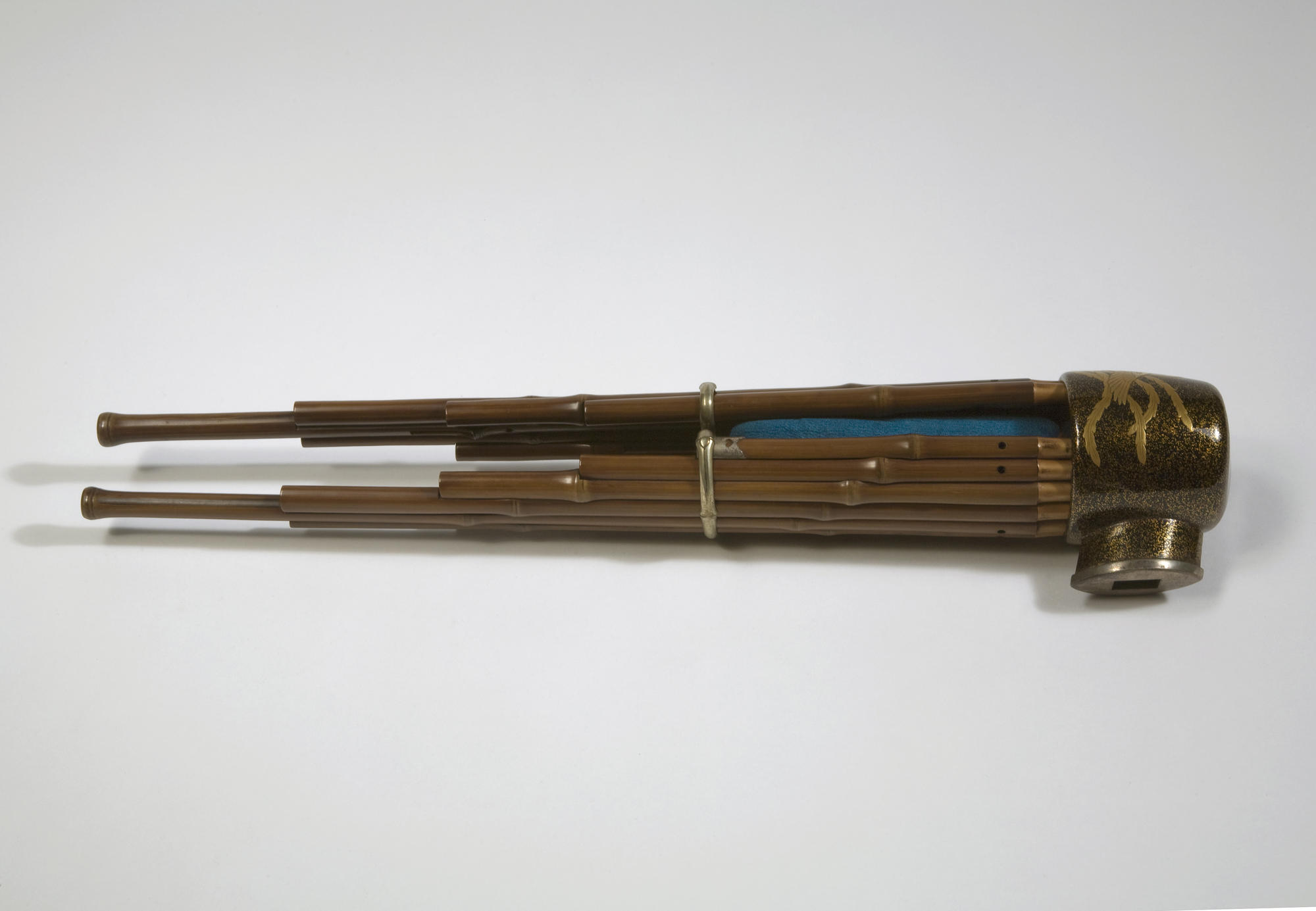
Japanese, Phoenix Mouth Organ (Ho Sho), before 1850
Isabella’s shō was given to her as a gift by Joseph B. Millet, the publisher of Japan, Described and Illustrated by the Japanese. Isabella’s friend Okakura Kakuzō, the first head of Asian Art at Boston’s Museum of Fine Arts, provided essays about the artists. In one, he wrote about Murasaki Shikibu:
Women set the style in literature as in art. The brilliant Murasaki Shikibu, the rich authoress of the Genji romance, the refined and cynical Seishonagon, and the sad, beautiful poetess Komachi, were models eagerly imitated by men, and their works eventually formed the basis of the present national literature.
Though from completely different places and historical moments, Murasaki Shikibu and Isabella Stewart Gardner were both women at the heart of their respective aesthetic worlds, whose singular artistic visions have had lasting influence to this day.
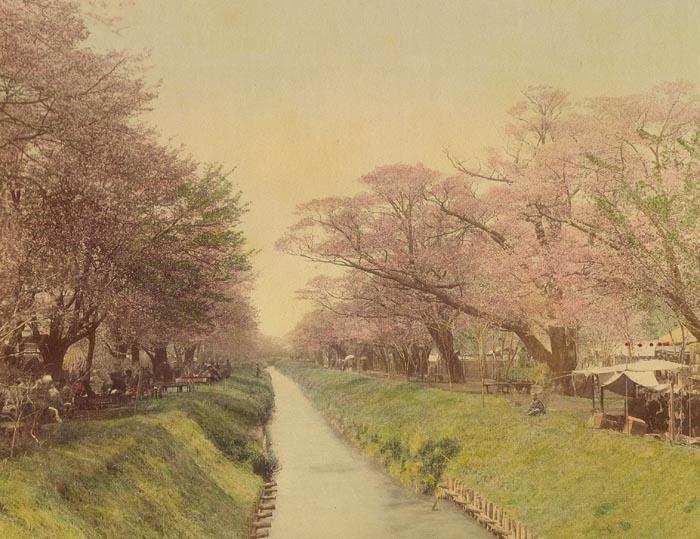
Image courtesy of Baxley Stamps
Hand-colored print of spring cherry blossoms at Koganei, from Brinkley and Okakura’s Japan, Described and Illustrated by the Japanese
Perhaps out of admiration for this influence, or maybe just in respect of their friendship, Kakuzō had a yearly tradition of writing Isabella a poem for her birthday on April 14, and the 1911 poem titled "The Taoist" is a fitting ode to a woman who is a cosmic force of nature:
"She stood alone on Earth—
an exile from Heaven. Of
all the Immortals she was
the flower.
Time receded in reverence
at her approach, space bowed
the way to her triumph. The
wind brought to her its
untrammelled grace, the air
lent to her voice the balm
of its own summer. Blue
lightning swept in her
glances, clouds unfurled in the
train of her queenly tread.
Infinity asked of Wonder:
'Below and above in thy wanderings
amongst the stars, hast thou heard
the name of this fearless Spirit,
who laughs with the thunder and
plays with the storm, whose fire
burneth not because she is fire
itself, whom water quelleth not
for she is the Ocean herself?'
Quoth Wonder: I know not."
Learn More

Music Collection
Listen to classical music concerts recorded in the Gardner's Calderwood Hall

A History of Music
Read about the Museum's long, music-inspired history

Third Floor Passage
Look into the room where the Tale of Genji screens can be found
